Every once in awhile an article comes through my Facebook feed that sets off alarm bells. The other day I saw a link to an article titled “A Glass of Red Wine is the Equivalent to an Hour at the Gym Says New Study.” The sub-title reads “New research reveals skipping the gym in favour […]
My VO2max Test Results: Running to Exhaustion!
This afternoon I completed my first ever VO2max test. The test is something I’ve taught about in my Exercise Physiology class, but until today I’d never actually done one myself, so it was with a great deal of excitement that I drove the hour from my campus to the exercise physiology lab at the University […]
New Science on Running Barefoot vs. in Low Drop Shoes: Effects on Ground Impact
Today on the Peak Performance blog Amby Burfoot discusses a new study by a research team at the University of Massachusetts headed up by running biomechanist Dr. Joseph Hamill (see abstract here). The study is an interesting contribution to our knowledge of how running shoes affect the way we impact the ground while we run, […]
A Contrast in Form: Variable Running Gaits at the 10K Mark of a Marathon/Half-Marathon
Sometimes a simple video can speak louder than words or any research study. Last Fall some of my students and I filmed nearly all of the runners in the Manchester City Marathon and Half-Marathon as they passed both the 6-mile (marathoners and half-marathoners) and 20-mile marks (marathoners only) of the race. The video below was […]
On Running Form II: Where Should Footstrike Occur?
Running coach and exercise physiologist Steve Magness of the Science of Running blog recently put up a long, thorough post explaining his thoughts about “How to Run.” One of the things I found interesting about his post was his discussion of the use of “cues” to help one improve running form. Often, as Magness admits, […]
On Running Form, Variability in Elites, and What it Means to You (and Me)
Image by -nanio- via Flickr If there is one thing that I have learned in 15+ years of teaching and studying biology, it’s that variation is the norm rather than the exception. Variability is the reason why biology is sometimes called the “sloppy science,” and it’s the reason why undergraduate biology majors at my college […]
Obesity and Physical Activity in the United States: America Needs Some Exercise
Sometimes a few simple pictures and videos can speak volumes. As part of my final set of lectures in my exercise physiology class this semester, I discussed the current state of affairs in the United States regarding physical activity, obesity, and the relationship of each of these to disease trends (I focused primarily on heart […]
Elite Males in Slow-Motion at the 2010 Boston Marathon: Cheruiyot, Merga, Kebede, Kigen, Goumri, Keflezighi, Hall
Image via Wikipedia A few weeks ago I posted a slow-motion video of Ryan Hall from the 2010 Boston Marathon that was taken by a pair of my undergraduate students (thanks Erin and Daniella!). They headed down to Newton on Marathon Monday to watch and film portions the race, and as it turns out, they […]
RP#15: Running Science – VO2max, Running Economy, Lactate Threshold
In this episode I discuss the science behind three topics that are highly relevant to your running performance – VO2max, Running Economy, and Lactate Threshold. My initial plan was to produce this episode using clips from my Exercise Physiology class, but opted instead to record an off-the-cuff summary of the topic that’s a bit tighter […]
Runblogger Runcast #11: Muscle Fiber Types (Slow-Twitch vs. Fast-Twitch) and Athletic Potential
You’ve probably heard of the phrases slow-twitch and fast-twitch – these terms refer to different types of fiber that we have in our muscles, The fiber makeup that each of us has in our muscles is somewhat variable, and is largely determined through genetic inheritance from our parents. Perhaps most importantly for runners, fiber type […]
Exercise Science Podcast
Exercise Science, Exercise Physiology, Biology of Sports and Exercise – regardless of what you call it, this podcast is all about the relationship between exercise and the human body. Mostly, it consists of lectures given in my Biology of Sports and Exercise Class at Saint Anselm College, but I may add article commentary, student content, […]



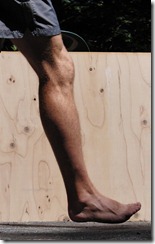
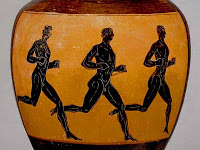
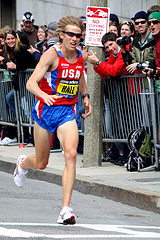
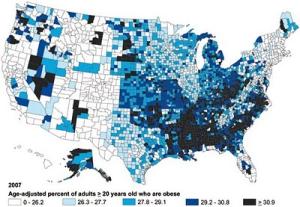
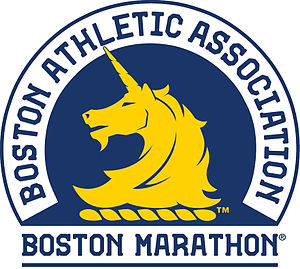
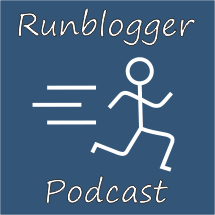
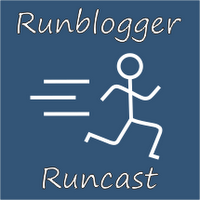











Lead Researcher Debunks the Red Wine Equals Exercise Article
Last Friday I wrote a post criticizing an article in My Daily that horrifically misinterpreted a research study on the compound resveratrol and its potential benefits as an exercise supplement. The article equated a glass of red wine to an hour at the gym in terms of health benefits. Unfortunately, there were numerous problems with […]